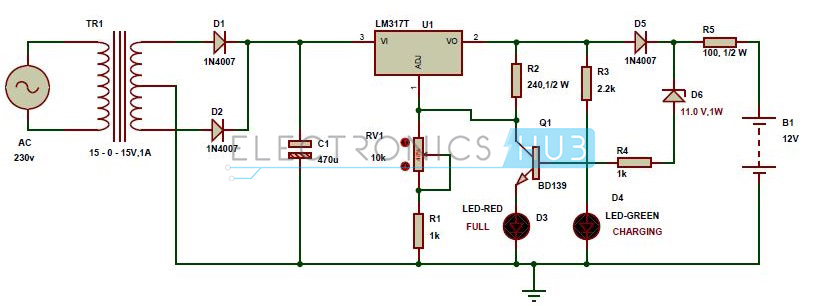Yes but yours does not work.with a similar circuit
Follow along with the video below to see how to install our site as a web app on your home screen.
Note: This feature may not be available in some browsers.
Yes but yours does not work.with a similar circuit
Well Well Well- you are right. Another one of my gross errors.Yes but yours does not work.

Well Well Well- you are right. Another one of my gross errors.
spec
PS: Well done MrAl.
Hi again Spec,OK BM.
No worries.
spec
Hi BM,Hi again Spec,
As long as 33R is connected I get no output and the red led does not turn on (ever). If I pull 33R then I can adjust the output current (it won't go down low enough without a change. Not able to go below 80ma and my battery only need 12ma. ) and the red led is on when not charging.
... I am not sure if you want that diode in series with the battery for an Li-ion as that messes up the voltage regulation a little.
I like to draw the most positive at the top of the page and the most negative at the bottom of the page.
View attachment 103293
The is no "below".Below is the corrected circuit.
TBC= To Be Completed. The schematic is there now.The is no "below".
That is intriguing me too.Hi,
What kind of lead acid battery takes 5ma to 50ma charge current?
I am used to seeing 200ma, 1 amp, etc., so this must be a very small battery.
That is intriguing me too.
spec
Hi all,
I have been trying to get this battery charger working. I found the schematic on the web and it all looks good (to me) and others claim it works, but for me I can't get the LEDs to work right. The green is supposed to be on while charging and then when the battery is charged (the Zener in reverse bias) redirects the current to the npn transistor through the red led on the way to ground. This is supposed to turn off the green and turn on the red. For me the red comes on when it's charging and the green is always on. Any ideas?
Fully agree Ron.That is one of the fundamental tenants of a good schematic, and if I had followed it, the error with the transistor would have stood out like a sore thumb. But that does not mean that I would not still have missed it.I like to draw the most positive at the top of the page and the most negative at the bottom of the page.

The battery is a 12v SLA rated at 1.2Ah. So what 10% of that?That is intriguing me too.
spec
The battery is a 12v SLA rated at 1.2Ah. So what 10% of that?
That wasn't my point. I was asked what my batteries rating was and I said .12A and others said that seemed small. Is 10% of 1.2Ah no longer .12A???Use a calculator if you can't work it out in your head.
Les.
UhOh. My mistake. I'm very sorry. I wrote it wrong the first time. Apologies to allThat wasn't my point. I was asked what my batteries rating was and I said .12A and others said that seemed small. Is 10% of 1.2Ah no longer .12A???
